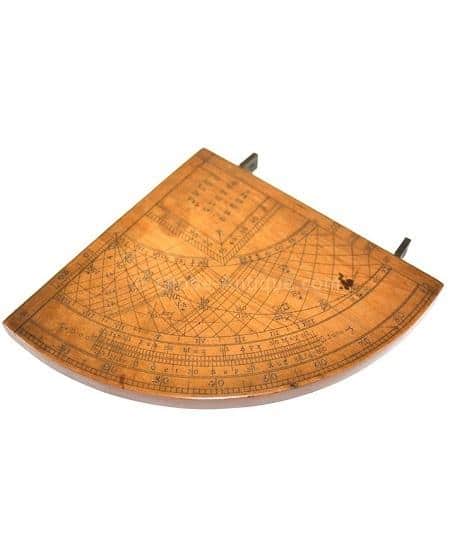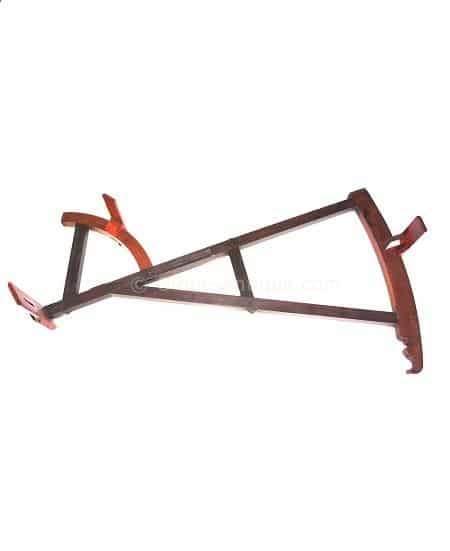Description
A boxwood Gunter quadrant,English,late 17th Century.
Degree scale subdivided to one degree,date scale subdivided to named month,mounted with two brass pinole sights.
Edmund Gunter (1581-1626) was an English mathematician, astronomer, and clergyman. He is best known for inventing several mathematical instruments, including the Gunter’s chain and the Gunter quadrant.
The Gunter quadrant is a navigational instrument used to determine the altitude of celestial bodies, such as the sun or stars. It consists of a quarter-circle of brass or wood with a movable index arm, a sighting vane, and a plumb line. The instrument is used by aligning the sighting vane with the celestial body being observed and measuring the angle between the horizon and the celestial body, which is then used to calculate the observer’s position on the earth’s surface.
The Gunter quadrant was an important navigational tool in the 17th century, used by mariners and explorers to navigate across the seas. Although it has been largely replaced by more modern navigational instruments, the Gunter quadrant remains an important historical artifact and symbol of the history of navigation and exploration.





